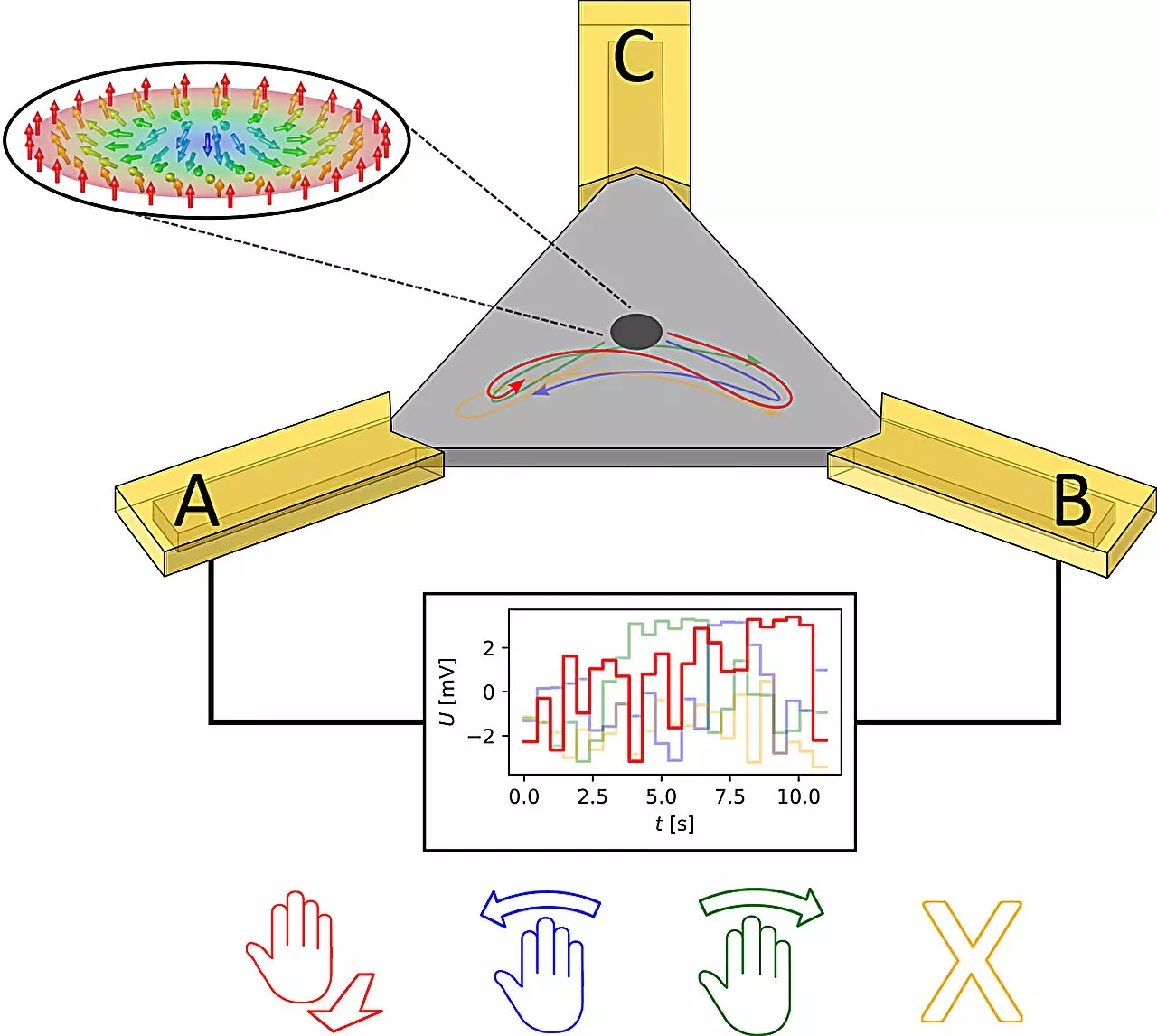The rapid advancements in computational technologies have paved the way for novel approaches that challenge traditional methods, particularly in the realm of gesture recognition. A recent breakthrough achieved by researchers at Johannes Gutenberg University Mainz (JGU) showcases the promise of Brownian reservoir computing, wherein hand gestures are recorded and transmitted to a system that utilizes skyrmions for detection. This technique not only demonstrates high accuracy and efficiency but also suggests a paradigm shift from conventional energy-intensive solutions towards more sustainable computing methods.
Brownian reservoir computing closely mirrors the functioning of artificial neural networks, however, it operates with significantly reduced energy demands. As explained by Grischa Beneke, a member of the research team, the system’s simplicity lies in its training process. Unlike traditional neural networks that necessitate extensive training periods and high computational power, Brownian reservoir computing merely requires the training of an output mechanism to interpret results. The underlying mechanics are akin to observing ripples in a pond when stones are tossed in, where the resulting wave patterns convey information about the initial disturbances.
The researchers adeptly implemented two Infineon Technologies radar sensors to capture the subtleties of basic hand gestures, like swiping left or right. The radar’s data translates into corresponding voltages that energize a multilayered triangular stack of materials, allowing skyrmions to move according to the input received. This innovative use of skyrmions, which are chiral magnetic whirls, adds an intriguing layer to data processing and gesture translation.
Skyrmions have emerged as intriguing candidates not just for data storage, but also as powerful components in computing systems. The unique properties of skyrmions enable them to engage in random motions, which proves beneficial in minimizing energy consumption. Traditional computing devices often require substantial power inputs to reconfigure states or movements. In contrast, this new approach allows for skyrmions to operate on low currents without significant interference from local magnetic variations.
The implications of using skyrmions in gesture recognition systems are profound. The researchers found that the performance of Brownian reservoir computing held parity or even surpassed that of state-of-the-art software-based neural networks when recognizing hand gestures. Such findings underscore the potential for switching to more energy-efficient methods that offer similar or better performance levels while reducing reliance on extensive computational resources.
Challenges and Future Prospects
Despite impressive achievements, there remain hurdles to overcome. The current method of reading signals depends on a magneto-optical Kerr-effect (MOKE) microscope, but the research team recognizes that transitioning to a magnetic tunnel junction could yield significant advantages. This transition could lead to a more compact overall system while improving performance metrics. The ongoing exploration of magnetic tunnel junctions may indicate a fruitful direction for future developments within this research domain.
The adaptability of the Brownian reservoir computing framework also presents potential for various applications across diverse fields. Given its intrinsic capability of processing sensor data at comparable time scales, the system can be calibrated to resolve an array of complex problems beyond gesture recognition. This flexibility opens doors for implementing similar technology in areas such as robotics, human-computer interaction, and more advanced data interfaces.
The interplay between gesture detection and innovative computing approaches such as Brownian reservoir computing marks a pivotal moment in technological advancement. The research from JGU illustrates beyond doubt that energy-efficient solutions can lead to not just performance improvements but also make strides towards sustainable computing practices. As the landscape of gesture recognition continues to evolve, the introduction of skyrmion-based systems holds enduring promise for various applications, heralding a transformative era for the interaction between humans and machines where efficiency meets intuitive communication.
Through the exploration of these groundbreaking concepts, we find ourselves posed at the frontier of computational technology, with limitless possibilities waiting to be harnessed. The future may very well be shaped by the advancement and integration of such innovative systems into everyday use, fostering a more interconnected world.

